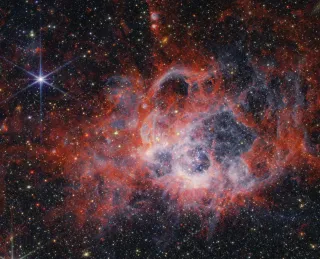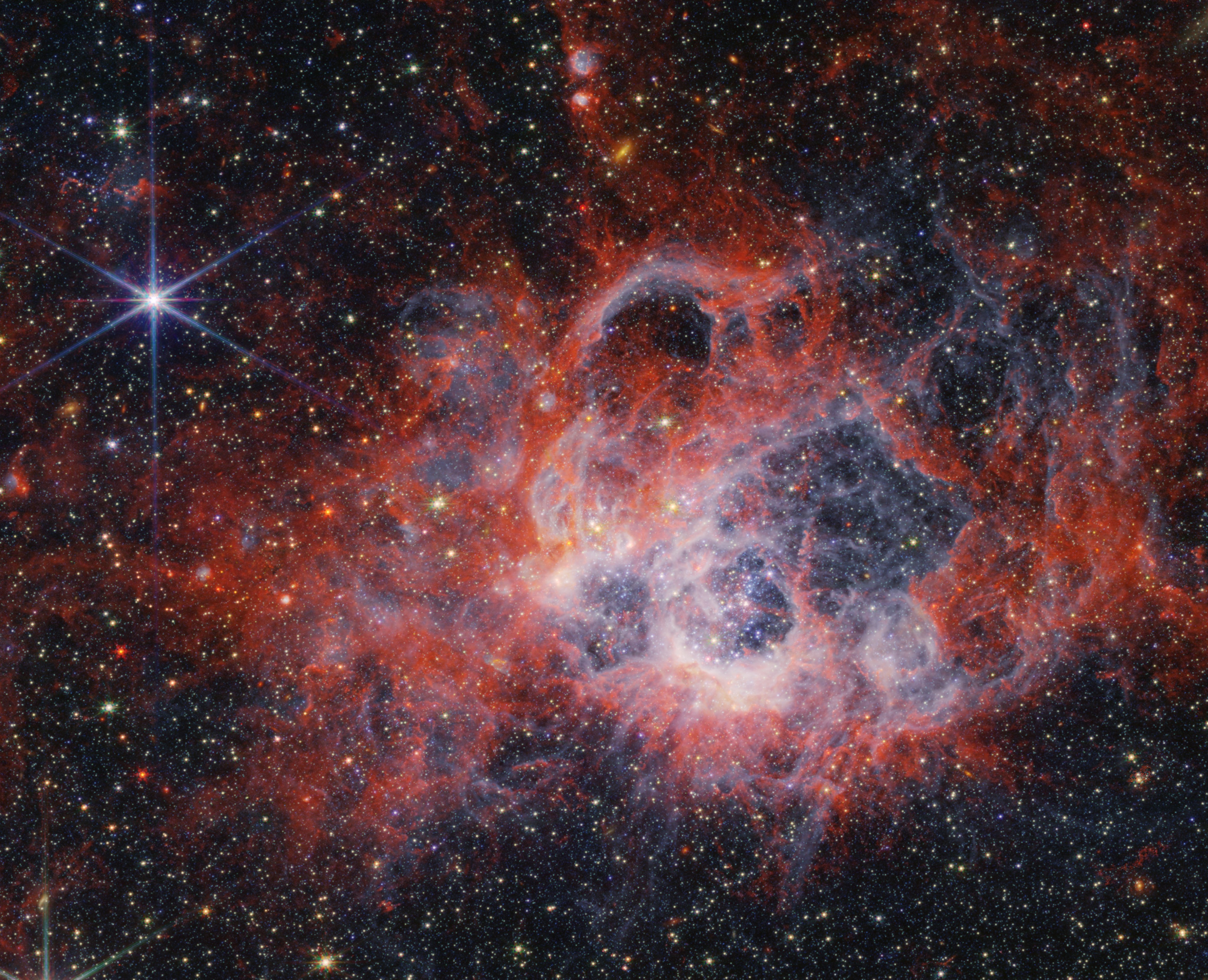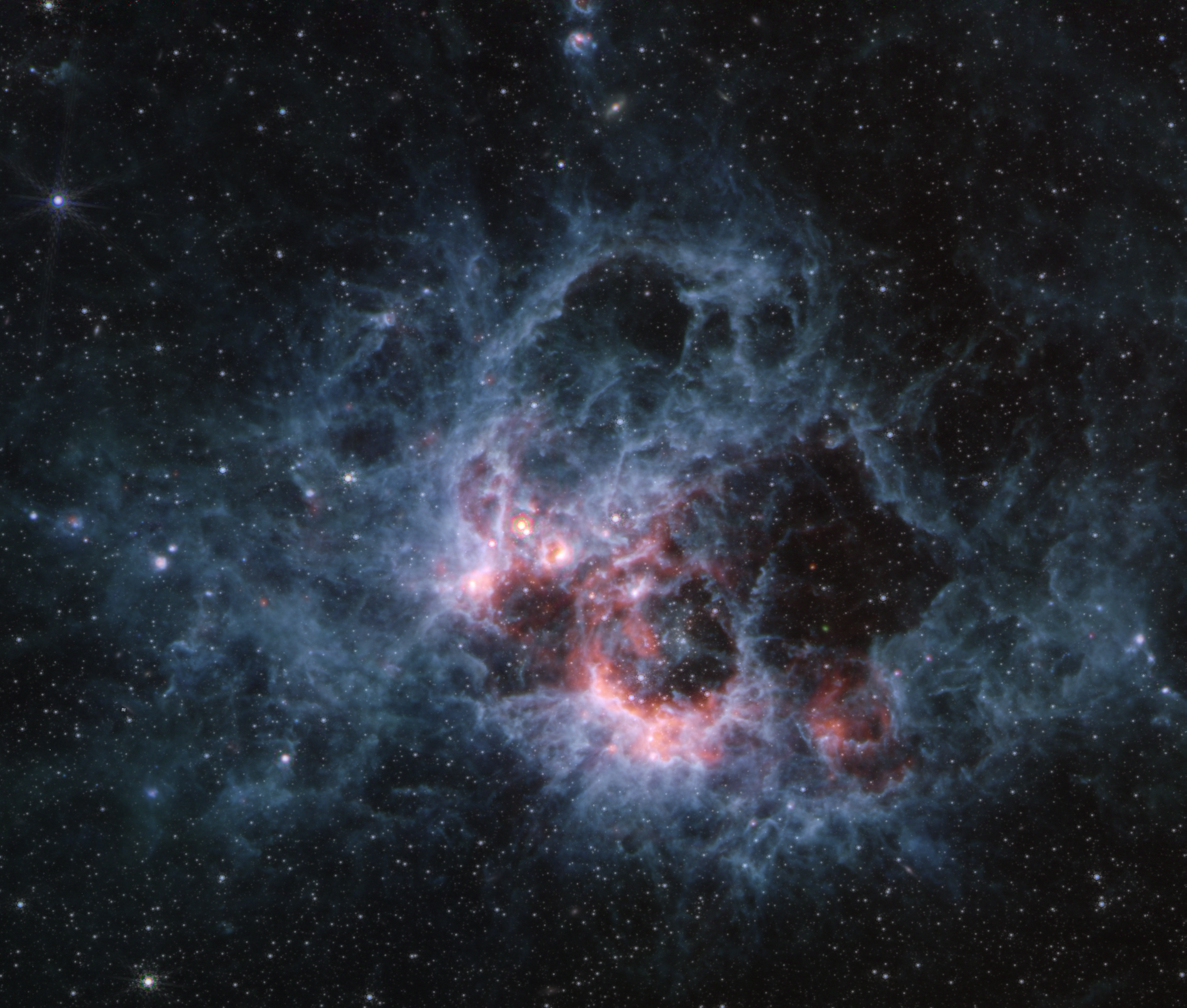NASA’s James Webb Space Telescope has captured new images of the star-forming region NGC 604, located 2.73 million light-years away in the Triangulum galaxy (M33).
The images from Webb’s NIRCam (Near-Infrared Camera) and MIRI (Mid-Infrared Instrument) reveal the intricacies of star formation in unprecedented detail, showcasing cavernous bubbles and stretched-out filaments of gas that create a more complete tapestry of star birth than seen in the past.
NGC 604 is home to more than 200 of the hottest and most massive types of stars, all in the early stages of their lives. These B-type and O-type stars, the latter of which can be more than 100 times the mass of our Sun, are rarely found in such high concentrations in the nearby universe, making NGC 604 a unique and fascinating region for astronomers to study.
In the near-infrared NIRCam image, the most noticeable features are the bright red tendrils and clumps of emission extending out from areas that resemble clearings or large bubbles in the nebula. These cavities have been carved out by stellar winds from the brightest and hottest young stars, while ultraviolet radiation ionizes the surrounding gas, creating a ghostly white and blue glow.
Webb’s mid-infrared view from MIRI offers a new perspective on the diverse and dynamic activity within NGC 604. In this image, fewer stars are visible, as hot stars emit much less light at these wavelengths, while larger clouds of cooler gas and dust glow prominently. Some of the stars seen in this image are red supergiants – cool but very large stars, hundreds of times the diameter of our Sun.
#WebbTelescope #StarFormation #CosmicTapestry #NGC604



